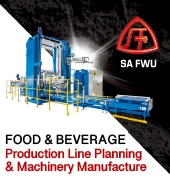Small candy makers forced to rethink their business strategies

For the manufacturer of Chick-O-Stick, Slo Poke and Mary Jane candies, it’s a good time to be in the confectionery business — if only they could get enough people to make their sweets.
While sales for Atkinson Candy’s offerings are up fivefold since 2019, staffing at the 90-year-old company has been cut in half during that time. Some mechanical workers, attracted by higher pay in industries including oil and gas, have left the family-owned business. Employees who make the artisanal treats have proven especially difficult to retain as they are drawn away by generous government aid programs, said Eric Atkinson, the firm’s 68-year-old CEO.
With fewer people, it can now take Atkinson up to three months to deliver an order to retailers and wholesale distributors, compared to two weeks before the COVID-19 pandemic — if it can even fill it. The labor shortage in 2021 was so severe that the company lost out on millions of dollars in sales simply because it didn’t have enough employees, its CEO said.
“It’s like listening to fingernails on a chalkboard,” said Atkinson of the stress from dealing with the lost sales.
Rethinking how to do business
Atkinson is not alone. Executives at small and mid-size candy companies said they are besieged by a slew of challenges weighing on their businesses, including higher shipping costs, labor shortages and commodities that often aren’t being delivered in the quantities they were promised.
“We’re in a different time where you have to rethink how you do business,” said Joe Colyn, a partner at JPG Resources, where he helps baking and confections clients procure ingredients.
For sweets makers, issues impacting their business, their bottom line and in some cases their outright survival, are nothing new. They have weathered wars, recessions, depressions and disruptions in supplies before.
But CEOs interviewed said the degree to which so many things are hitting them all at once is forcing them to rethink how they do business and overhaul key parts of their operations that have been largely unchanged for decades. They include everything from how they go about hiring and retaining workers to when and how much of an ingredient or packaging they purchase in advance.
Small and mid-sized chocolate and candy companies make up a significant portion of the National Confectioners Association’s 600 member companies, about half of which are manufacturers. These include all kinds of operations, from multigenerational companies that have been in families for decades, to new ones just getting started.
“There’s no question that the challenges faced across the industry — supply chain, inflation, labor shortages, broad pandemic impact and more — have disproportionately affected small and mid-sized companies compared with their larger counterparts,”
Carly Schildhaus, a spokesperson for the trade group, said in an email.
Daniel McCarthy, an assistant marketing professor at Emory University, suggested some smaller players in the category play defense by raising capital through investors or taking on manageable debt while they have the opportunity. These companies also should be prudent stewards of their balance sheet by carefully watching their spending, and raising prices like their bigger CPG competitors are doing, he said.
“The good thing that they have going for them that other larger [industries] would not is the fact that the [cost for their product] is so low,” McCarthy said, noting a 20% increase for a candy bar is far easier for consumers to digest than a similar increase on an item like a car. “In that sense, it’s a more defensible position that they are in.”
Atkinson, whose candy business is facing higher costs for everything from sugar to peanuts — which have seen costs increase more than 20% — has passed on some of its higher expenses to consumers through price hikes. The most recent one took place last week.
“We try to maintain a modicum of a profit and most of the items were under water or headed there,” he said.
Despite the hardships infiltrating the industry, chocolate and candy sales remain robust, helping to at least partly offset higher expenses and labor challenges. Chocolate and candy sales were up 11% in 2021 from the prior year, according to NCA’s State of Treating report, and Schildhaus noted the segment is “seeing strong performance” again this year.
Back to the future
For many smaller candy makers, the current environment has forced them to plan further ahead or look for alternative solutions — some of which may not be ideal.
At Boyer Candy Company in Pennsylvania, the Mallo Cup and Clark Bar maker is thriving in the current environment. The company is ordering ingredients earlier and tapping into the decades of experience amassed by top executives, many of whom have been at the 86-year-old business for decades, said Anthony Forgione II, Boyer’s president and CEO.
“It’s just more anticipation, more forecasting,” said Forgione, who noted sales are up 36% so far this year. “If you plan accordingly, it’s really not” that bad.
Boyer used to order corn syrup two weeks in advance, he said. Now it’s securing supply three months ahead based on historical projections. The company is making similar advance purchases for sugar and peanuts.
Colyn with JPG Partners said the firm is encouraging smaller businesses to engage in more frequent contact with their ingredient suppliers — as often as once a week — to maintain the relationship and better communicate their long-term needs amid a volatile and uncertain environment for some materials.
“There’s no question that the challenges faced across the industry — supply chain, inflation, labor shortages, broad pandemic impact and more — have disproportionately affected small and mid-sized companies compared with their larger counterparts.”
Carly Schildhaus,Spokesperson, National Confectioners Association
Atkinson said shortages tied to Russia’s invasion of Ukraine have caused his company to cut down on its consumption of sunflower lecithin from that country used to make its caramel, taffies and peanut butter candies.
He’s hopeful the company can get the ingredient from other places, including India. If Atkinson can’t, it might have to switch back to soybean oil, which it stopped using because it is an allergen. Changing the formula now would require new packaging that lists the ingredient — which would cost hundreds of thousands of dollars to reprint, Atkinson said — and throwing unused wrappers out.
To save money, Atkinson has purchased more ingredients that don’t expire. Its efforts have also extended into packaging, where it has stocked up on wrappers, boxes and plastic wrap. Still, he said, in many cases the candy maker is left to pay the prevailing market price for his ingredients.
“In times like these you can’t bother with the costs of ingredients,” Atkinson said. “You buy them no matter the cost because the alternative is shutting down and that is not an option for us.”
Stuart Selarnick, CEO of Philadelphia-based Frankford Candy, said suppliers have occasionally failed to deliver the promised amount of commodities like milk chocolate, forcing him to make new arrangements with other firms to fill the missing demand.
The shortage of milk chocolate — the result of surging consumer demand and challenges at its supplier, including a labor shortage and difficulty sourcing raw materials — is highly unusual. It is the first time he’s had trouble getting the ingredient since he started at the company in 1987, Selarnick said.
“You have to move on. You have to be resourceful and find other sources, other opportunities, other suppliers,” Selarnick said. “That’s what we’re really good at because we’re nimble. We can move quickly.”
Help wanted
Andrew Schuman, the owner of Hammond’s Candies in Colorado, has taken a similar approach to purchasing ingredients and packaging. So far, the 102-year-old maker of candy canes, lollipops, taffy, chocolate and other sweets has “weathered the storm pretty well,” he said.
But like countless other businesses of every size throughout the country, Hammond’s has faced its fair share of challenges recently, particularly when it comes to finding and keeping workers.
“It’s a buyer’s market in labor because they’re buying the job from you,” Schuman said. “And they can go anywhere they want.”
Hammond’s employs about 160 people. While about 80 people have been the core of the company’s workforce for 15 or more years, Hammond’s has struggled to keep the rest of the positions filled during the last three years. Schuman estimated the other 80 workers who do everything from package candy to cook marshmallows have turned over two to three times a year since the middle of 2020.
In May, the business brought in a full-time recruiter for the first time in its history and currently is doing an average of 25 interviews a week to court prospective workers. It could turn to a temp agency for help, but that costs 35% more, Schuman said, and the workers who come often don’t care as much in the long run because they are not as invested personally in the business.
To coax workers into staying, Hammond’s has paid random quarterly bonuses, offered surprise lunches and snacks, and provided flexible work schedules for doctors appointments or picking up children from school. “We’ve done everything we can to keep employees,” he said.
A labor of love
Small candy and chocolate makers contend one advantage they have over deep-pocked CPG giants such as Hershey or Mars Wrigley is their ability to pivot quickly.
Forgione with Boyer credits his company’s experienced executive ranks. With many people having been with Boyer for several years — including his mother and brother — they have a better feel for positioning the business and what future demand for their products will be several months out.
“We have used our experience to stay ahead of the market,” Forgione said.
Selarnick said Frankford’s unique and ever-changing product mix has played a vital role in helping it to navigate the market turmoil. Its portfolio includes more than 100 branded items, such as Dunkin’ Iced Coffee Flavored Jelly Beans, Hot Chocolate Bomb varieties and Krabby Patties gummy treats. These help Frankford stand out from its competitors, while providing it with the flexibility to prioritize those offerings with higher margins.
Unlike some of its competitors, Selarnick said Frankford’s stable unionized workforce has largely negated any threat to availability of workers. But he remains concerned during the next 12 months about the future as he braces for higher expenses for everything from shipping to fuel.
“It’s a family-owned company. It’s going to sink or swim. We have no issue with ordering millions of dollars in commodities because one of two things are going to happen the company is doing to thrive, or we’ve going to struggle, one way or the other.”
Anthony Forgione II ,CEO, Boyer Candy Company
“When you build your business model ... you have to build in X amount for what you think [your expenses are going to be,” Selarnick said. “In this environment, it is X-plus because you have to make sure you’re covered.”
With many smaller candy companies operating under the same family for years, ensuring the business survives is as much about personal pride as it is preserving a deep family legacy.
Atkinson conceded that while there are “easier ways to make a buck,” keeping the business thriving after taking over from his grandfather “is really a labor of love.”
At Boyer, CEO Forgione said the company has little choice but to adapt.
“It’s a family-owned company. It’s going to sink or swim,” Forgione said. “We have no issue with ordering millions of dollars in commodities because one of two things are going to happen: The company is going to thrive or we’re going to struggle, one way or the other.”














